Let’s cut to the chase. Imagine squinting at the horizon on a sunny afternoon, your eyes burning, your vision blurry… and you’re not in a late 90s music video, though your discomfort might make it feel like one. The truth? Your eyes are taking a hit from UV radiation way more often than you think — and it’s not just on a beach. Your eyes are vulnerable to hidden harm everywhere. From concrete sidewalks to rainy days with thin clouds, the sun is sneaky. So, here’s the deal: sunglasses aren’t fluff accessories. They’re literal armor. Before you skip them this summer, stop. Please. The future of your eyes depends on it.
I’m serious. Think about this: the skin on your eyelids is the thinnest on your body. It ages faster, gets sun-damaged easier. You’d lather sunscreen on your shoulders, wouldn’t you? So why leave your eyes exposed? To answer it bluntly? You shouldn’t. Whether you’re behind the wheel, out for a hike, or even just commuting on a cloudy day, your eyes need more protection than most of us realize. Let’s talk about this like two friends catching up over coffee. Not textbooks.
UV Protection: Your eyes’ secret superhero
When most people hear “sunglasses,” their mind jumps to style, a sleek look, maybe channeling their inner Leonardo DiCaprio from somewhere around Django Unchained. And hey, looking sharp is a bonus — but ask any ophthalmologist, and your vision should come before your fashion sense. UV radiation? It’s not just cancer-causing for your skin. It’s bad news for your eyes, too. Ever heard of photokeratitis? That’s sunburn of the cornea. Ouch.
Before you roll your eyes and assume every celebrity wearing wraparound sunglasses is just playing it cool, guest what? They are cool, but they’re also getting real protection. Specifically from UVA rays — the long-wavelength kind that can deeply penetrate the eye — and UVB, which hit the outer layers but are way more unstable. What’s the cutoff? Specialists point to a 100% UV400 rating. That means full coverage up to 400 nanometers — a fancy way of saying they stop all the worst UV leftovers from reaching your eyes.
Are UV rays really that dangerous?
Let’s get one detail on the table: UV doesn’t ask if you’re outdoors. It hunts you. The sun’s UVB rays are the real villains. They’re short, aggressive, and your eyes don’t stand a chance without proper protection. MIT research found UV rays start building up as early as adolescence, hitting harder when you’re not even aware you’re getting burned.
Still not convinced you need sunglasses year-round? Let’s run through the hit list of potential damage:
- Cataracts: Over time, UV exposure clouds your eye’s lens, leading to vision deterioration no matter your age.
- Macular Degeneration: The sun’s UV rays can slowly degrade your central vision — even if you’re not at the beach.
- Pterygium (aka “surfer’s eye”): This appears as a growth on the white part of your eye, thanks to long-term outdoor exposure, especially near water or snow.
According to Bryce St. Clair at Johns Hopkins, the earlier you wear UV400 sunglasses, the lower your risk of eye damage — even if you’re not perfect about it 24/7. Like sunscreen: layering matters.
Skin Cancer You Never Think About—But Should
You wouldn’t go out with no sunscreen, would you? So why just let those sensitive eye areas go bare? Those thin lids take UV radiation like a punch to the face. Ever notice how sunburn feels 10x worse when it’s on your eyelid? That’s because it’s 10x more delicate.
If it feels scary, it is. According to Dr. Cherny from Mount Sinai, UV exposure isn’t just beating up your eyes. It’s calculated damage to your eyelid, too. The “surfer’s eye”? Yeah, that’s more than just a cool nickname. It’s a legit warning to wear sunglasses that cover a full circle — not trendy tiny ones where you can still see the sun burning into your skin through the frames.
Do sunglasses lower skin cancer risk? Medical update
Go back to scope. The Cleveland Clinic released findings showing that basal cell and squamous cell skin cancers — yes, those common lil’ hiccups — are more likely to appear on your eyelids if your sunglasses don’t cover enough. That beach tan comes with a higher risk for those growths without proper lens coverage and seal clout.
Wrap it up — as the experts would say. Big frames, solid coverage, and especially paying attention to UVA and UVB ratings can determine whether you’re building a risk or reducing one. Your fashion choices? They can save your skin.
Why bigger sunglasses win the coverage game
So here’s the eye care 101 in juicier terms. Let’s say you have two shades: one chic tiny frame, the other oversized with full wraparound support. The tiny ones? They’ll look good, but not shield your upper cheeks or the sides of your eye area. The wrap-around ones stop UV from piercing in angles — making them the real MVP, especially during summer.
| Type of Sunglasses | UV Protection | Skin Coverage | Best For |
|---|---|---|---|
| Classic pilots | 100% UV400 | Partial coverage | Fashion-ready look + light sun |
| Oversized aviators | Full UV400 | Full eye skin coverage | Outdoor hangouts, reflective areas (water, snow) |
| Wraparounds | Strong across all sides | Total surrounding shield | Sports, high wind, ultra-bright spots |
Think bigger. Think frame-fortresses.
Debunking myths – what’s real (and what’s just a retail hustle)
Don’t fall for the “if it’s expensive, it’s better” trap. Seriously — those $300 name-brand frames might end up being less protective than your nephew’s shady gas station shades. According to pieces from All About Vision, the material plus the presence of the invisible coating matters more than your credit-card receipt from the eyewear store. UV absorption isn’t about the price — it’s about the label.
Sad reality: a polarized lenses pitch might sound cool, but truth is, they might be a hassle when you’re looking at your screen. Mirrored lenses? They’re there for style, not science. It’s true — mirror tints won’t block dangerous rays better. So don’t grab them thinking you’re giving your eyes a superhero upgrade unless aesthetics are the real draw.
Do expensive sunglasses guarantee better UV protection?
This one makes me face-palm hard, honestly. Celebs swear by their luxury lenses, and some of us believe them without looking deeper. But studies say labels tell the real story, not logos.
According to medical researchers at Hopkin’s, you don’t need 14K gold frames to get 14-year eye protection. A pair with UV400 stamped across? That’s the real deal, whether it’s $14 or $140. Expensive definitely doesn’t equal effective. In fact, a $50 brand might block UV better than a $300 pair with a flashy designer name. It’s not flashy sockets that save you; it’s the right coating.
| Myth | Reality | Proof |
|---|---|---|
| Only fancy sunglasses protect your eyes. | UV400 label shields more than brand premium. | Harvard Health confirms that price rarely correlates with UV blockage. |
| The darker the lenses, the more UV protection. | Not true. Darkness = comfort. UV filtration = chemistry. | Healthcare providers explain lens tint ≠ UV filter. You can rest left if tint sets you up for eye health. |
Beware marketing fluff. You’re not getting automatic safety from your $300 Gucci. You get it from the sticker on the case when you buy it.
How to find the best sunglasses – no degree needed
So, you’re ready for new shades. But where to turn? First thing’s first: forget polarized or mirrored unless you have specific screen issues or are planning to skipper a yacht.
Actual “best sunglasses” checklist!
- Check the UV400 label. That’s the “yes, it actually protects” stamp right there.
- Polarized lenses if glare is your foe. If you’re boating or driving constantly, polarized = your best pal.
- Frame overseas the coverage idea. Wraparound is the real hero. If it’s summer and you’re on concrete/snow/water, this style keeps UV off your skin, too.
- Ditch the mirror myths. Flash coatings are entertaining, but not harmful — or helpful. They reflect light but can be tricky for balance.
- Dark lenses? Not always better. They can make your eyes weaker at adjusting light. Lower light conditions can hit the eyes hard once you go back indoors. Choose intelligently, and your eyes won’t peak after sun exposure like sensitive light bulbs.
What’s UV400, and why you need to track it down
This one’s critical — and it’s easier to spot than you think. UV400 means 100% cotton in sunscreen terms. No UV reaching your eyes, period. It doesn’t mean super-duper-dark lenses. Just effective, consistent ones.
Need for speed? Mirror finishes and polarized pairings work great for reducing dazzling rays. But remember: polarized doesn’t stop UV rays faster than UV400 — it just smooths them out. Your inner optometrist would laugh and say your priorities need balancing. UV400 protection > polarized glam shot.
Stories that make believers out of skeptics
When Dr. Rishi Singh from Cleveland Clinic talks UV with patients, they often reply, “I’ve gone years without them and never noticed anything bad.” He chuckles and says: “That’s the problem. UV damage sneaks in, quiet and persistent.”
His favorite illustration? A long-time surfer who caught pterygium, a growth you don’t want. Near waters? UV hits harder off reflective surfaces. The sun isn’t just above you — it’s bouncing in from the sand, water, and even from sunlight against glass panels. Like that traffic jam last year where the sun was your worst enemy.
Surfer’s love letter to UV protection
If you’ve ever been on the edge of the sea looking at the horizon in agony, you’ve seen the consequences. Pterygium growth isn’t rare among surfers. Surfaces like water? They act like free-range UV emitters, scattering everything back like a nasty game of bumper pool. You get the fun glare; the UVs get to your cornea. It might not slow your wave catch, but it’ll make you pay long-term.
I heard a story at the clinic. A patient in his 20s started surfing young in Florida. He wore shades — or thought he did — but didn’t care about UV ratings. Ten years down the line, he had to undergo eye surgery just to keep a UV-related “wedge” from growing further. UV doesn’t care if you’re cool and into action sports. It’ll take a bite at your vision regardless.
So when choosing sunglasses, don’t just grab a pair. Think real scenario-based picks. If kayaking or hiking is your vice, wraparound game plan. If spending more time in the concrete doom of cities, autos and skylights are your often-overlooked reflective culprits. Polarization might not be the MVP, but it’ll dull that window glare around midday.
Real talk on blue light – what sunglasses can (and can’t) do
Hold up — before you go buying special “blue light sunglasses” for your laptop zoom calls, just take a breath. Blue light from screens? Definitely annoying if you’re glued to them. But real danger from natural sunlight? That’s UV — not the digital kind your phone is throwing your way.
Can regular sunglasses deflect blue light from tech gadgets? Only if you’re wearing the right kind. Amber-tinted lenses help, as Mount Sinai’s guide to sunglass shopping recommends. But blue light doesn’t cause cataracts or photokeratitis. So, unless you have migraines from overhead lighting, your main focus should be on the fundamentals: UVA and UVB protection, and sales on deeper lens tint isn’t your panic-button.
Do you need blue light-blocking sunglasses at your desk?
Unless stopping squints during sunset reflections while you stare into your second monitor, probably not. Blue light doesn’t harm your eyes — vitamins and antioxidant-rich diets help against longer-term damage. However… blue light can disrupt your circadian rhythm, making it harder to fall asleep. If your device looks dimmer from screen consider exploring amber tints as an alternative. But if you’re going for UV eye care, this isn’t your focus.
Finding the right sunglasses for different occasions
Here’s the thing — there isn’t one pair that fixes it all. Would be nice, though. But depending on your day — whether beach volleyball or a sunset drive — your lenses should shift. Like… okay, not like your mood music, but shift accordingly. Let’s give a few custom scenarios.
Summer beach: messy sands, unavoidable rays
You’re already in the sun, sand, and probably not paying attention to every angle UVs are coming from. A mirrored frame on land, oversized lenses by the sea — whatever helps coverage. But here’s the beach-specific pointer: water is reflective stronger than glass panels. So wraparounds win over fashion fans.
To tie it all together? According to eyecarecenter, when UV protection is lacking on the surface where you’re vacationing, the sun’s scatters like a DJ light show across your vision. Wraparound goggles — not just sunglasses — can stop the worst of it.
Winter sports: snowblindness is real
“But it’s snowing, so why would UV be an issue?” That was me, back in 2014, wincing through what experts call “snow blindness.” According to Johns Hopkins Medicine, the tighter your seal, the safer you are on a snowy peak. Snow reflects over 80% of UV radiation. The sun doesn’t vanish when it’s windy. If anything, it sneaks through stronger.
City and driving situations: reflections are the wolf in sheep’s clothing
You might think your car windshield builds a UV-safe fortress — but no. Tests from All About Vision show most regular glass doesn’t stop UVA rays. So the reflection from a million buildings and cars? That isn’t just bad for your style; it’s bad for protection. Doneties that have anti-glare can help during rush hour drives.
Also — polarized lenses can dent the glare you get from windows. They’re not infallible but work wonders if driving is a large part of your day.
Smart ways to use sunglasses – improve your lifespan and comfort
Here’s a reality check from personal mishap: I once thought I could dodge damage with a wide-brimmed hat. Not smart. The Cleveland Clinic and Mount Sinai reminded me how UV is persistent baby. Covering all the angles is reality.
Think of it like a cone of protection. A hat gives 50% blockage of UV. Add a solid frame around, and you’ve got double% work version. If you’re around for more than 20 minutes, casual wander or pro sports, treat sunglasses as sunscreen for the eyes. Same frequency does matter, like care routine you don’t skip.
Use them with a hat – UV becomes double-ghosting
Research from medical institutions like Northwestern Medicine says a sturdy hat adds even more shield. Your skin at the brow and eyelid goes full princess ring. The side UV sneaking through? That be gone with solid coverage and heavy brim feel.
Do you replace sunglasses? Because those lenses age too
I remember a patient at the optometrist who had worn one pair for over a decade. The lenses were scratched butluv’d. The tap-in from the doctor: “You’re wearing prisms at this point.” Over time, UV protection fades. So if you’re walking into sunlight like it’s a tipsy risk, maybe go less “nostalgic vintage” and more “fresh UV400 lenses.”
Replace sunglasses when they lose their UV edge
If your lenses are scratched, scuffed, or faded to where only half the eye is passing through properly, they’re not giving you full coverage anymore. I learned this the hard way. When traveling through reflected UV, using old, damaged sunglasses is like applying sunscreen after it’s expired.
So set reminders. Don’t just rely on memory. If your shades are cocked in one arm or pass areas of bent distortion like a funhouse mirror covering an eye, just toss them. Better to invest in a solid pair that gives lid-to-lens coverage anew every few years, right?
Prescription, clip-ons, and vision-friendly options
“I wear glasses,” people say, shrugging off the notion of sunglasses. Rookie mistake. If your lenses don’t even take a step in UV prevention, your eyes don’t get daylight security. Think about this: cataract risks? High. Macular deterioration? Even with contact lenses or intraocular lens implants, UV is not taking a break. So what can you do?
Prescription sunglasses are a game-changer for clear vision
Hit a sports field, read signs from buildings, or ride a bike, and still want your eyes balanced? Get real ones with a proper tint and valid UV400 protection. Polarization? Might be tabs in high-glare environments, but not manual necessary steps. Many doctors at clinics recommend a double-check — especially for patients with pre-existing risks like diabetes or hereditary macular issues. Because eyes without proper support crack under pressure. Literally.
Another cool option? Clip-on sunglasses (either magnetic or traditional). As long as you’re protecting rather than looking nice, with built-in UV ratings, these are great for changing environments — you step from low-light indoors into high-glare outdoors and still look composed. Although if magnetic feels like a safety hack for your frame, choose a clip that doesn’t slouch and expose UV damage. Or polarized might come into play if your usual environment reflects surfaces too frequently, like park slopes or car windows.
Final thoughts for sunny days (and cloudy ones too)
Let’s pause one second. You’re probably thinking: okay, so UV400 > polarized > mirror-coated, and oversized frames help all skins? That’s exactly it. But let’s get personal real quick. Several years ago, I went paddleboarding without lenses. The next day, my eyes looked like someone gave them a screaming tantrum. Red, swollen, gritty, and burning — a trip to a walk-in clinic revealed photokeratitis. The eye sunburn you didn’t know existed. Here’s the irony: it’s reversible, but it’s an early sign your UV tolerance is low and your prevention strategy is broken.
Sunglasses are more than summer fashion. They’re a personal protection plan you carry in your pocket. Whether it’s from addressing cataracts before they form, reducing risk of skin cancer on fragile eyelids, assuming glare’s battle against wind or addressing doctor’s wink about UV400 brands, the core is your health. Because headlines like “Don’t pinch your eyes at 50” are better synonymous with prevention than reaction.
One more final emotionary hat tip: practice what you learn. Whether it’s for fashion, active hobbies, or pure eye health, a good pair can be your favorite accessory. Literally — they let you live your life and actually see it properly longer.
And if you’re feeling conflicted or unsure where to begin? Your eye doctor will help. They can test UV absorption using tools like photometers, give advice on baffling lens styles, and even stop you from wearing last year’s faded buggy sunglasses. So next time that ophthalmologist says, “The future is bright…”, you already know the answer: yes, as long as you’re wearing the pair that actually matters next to your style.

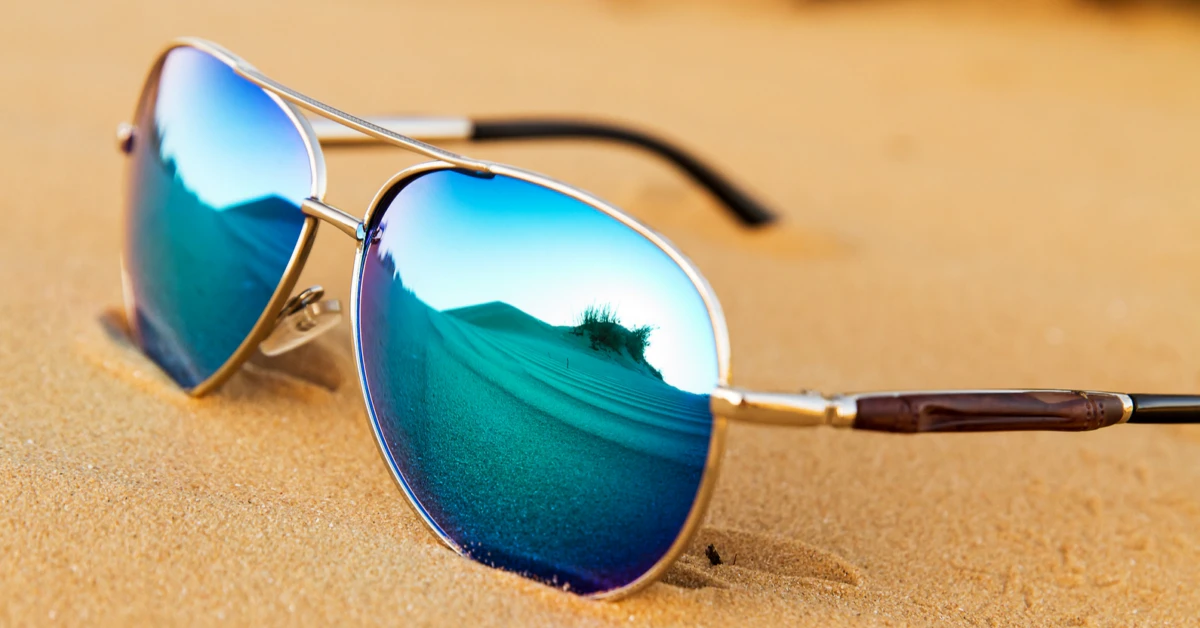


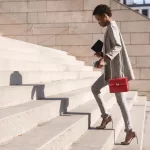



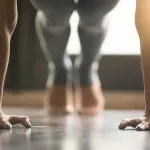
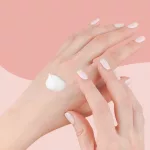


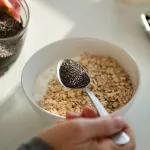

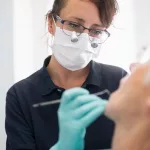



Leave a Reply
You must be logged in to post a comment.